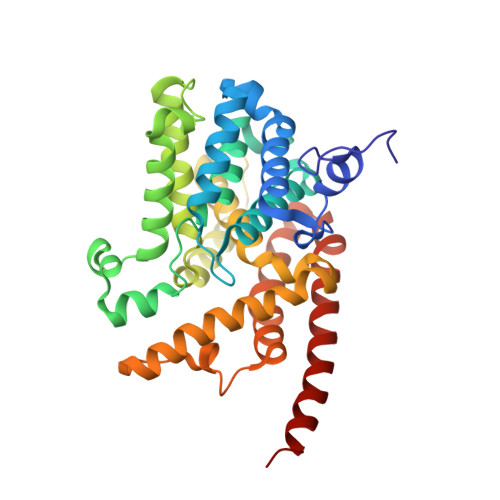Structural basis for the catalytic mechanism of human phosphodiesterase 9.
Liu, S., Mansour, M.N., Dillman, K.S., Perez, J.R., Danley, D.E., Aeed, P.A., Simons, S.P., Lemotte, P.K., Menniti, F.S.(2008) Proc Natl Acad Sci U S A 105: 13309-13314
- PubMed: 18757755
- DOI: https://doi.org/10.1073/pnas.0708850105
- Primary Citation of Related Structures:
3DY8, 3DYL, 3DYN, 3DYQ, 3DYS - PubMed Abstract:
The phosphodiesterases (PDEs) are metal ion-dependent enzymes that regulate cellular signaling by metabolic inactivation of the ubiquitous second messengers cAMP and cGMP. In this role, the PDEs are involved in many biological and metabolic processes and are proven targets of successful drugs for the treatments of a wide range of diseases. However, because of the rapidity of the hydrolysis reaction, an experimental knowledge of the enzymatic mechanisms of the PDEs at the atomic level is still lacking. Here, we report the structures of reaction intermediates accumulated at the reaction steady state in PDE9/crystal and preserved by freeze-trapping. These structures reveal the catalytic process of a PDE and explain the substrate specificity of PDE9 in an actual reaction and the cation requirements of PDEs in general.
Organizational Affiliation:
Pfizer Global Research and Development, Pfizer Inc., Eastern Point Road, Groton, CT 06340, USA. shenping.liu@pfizer.com


















